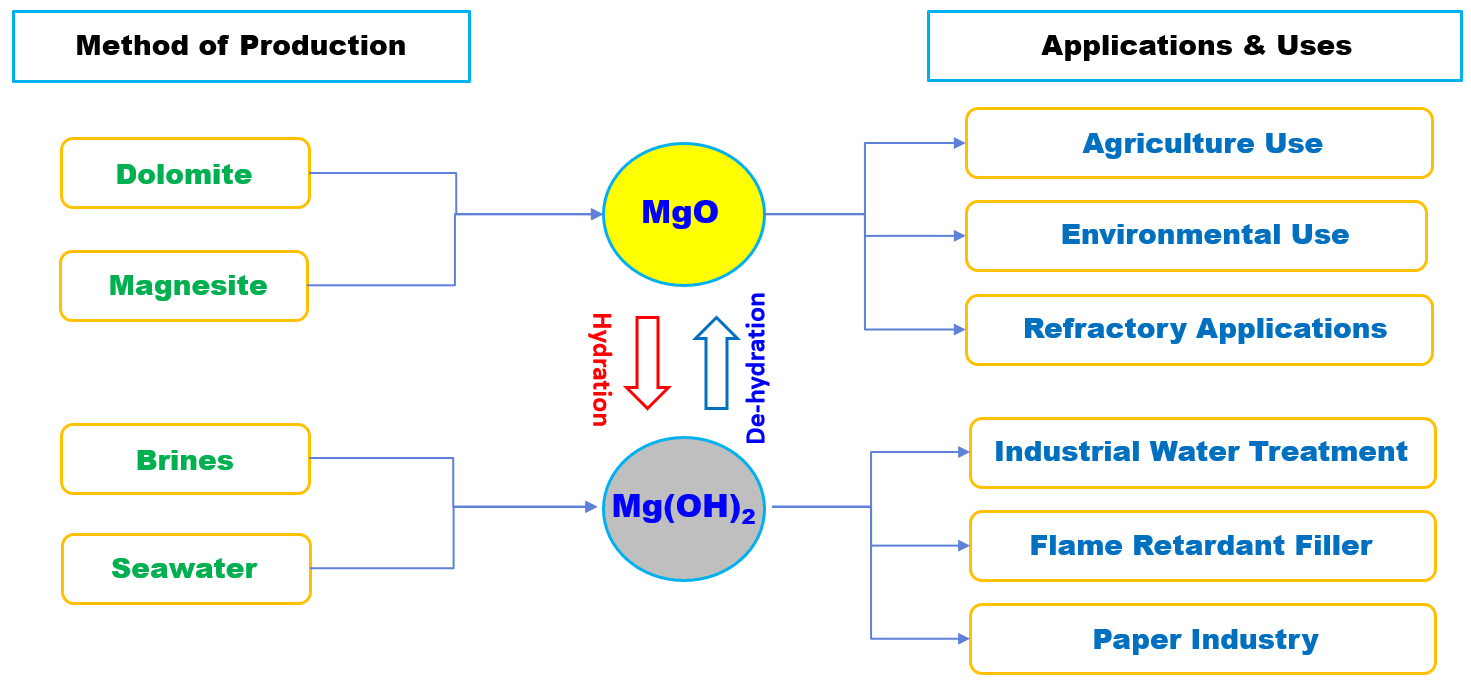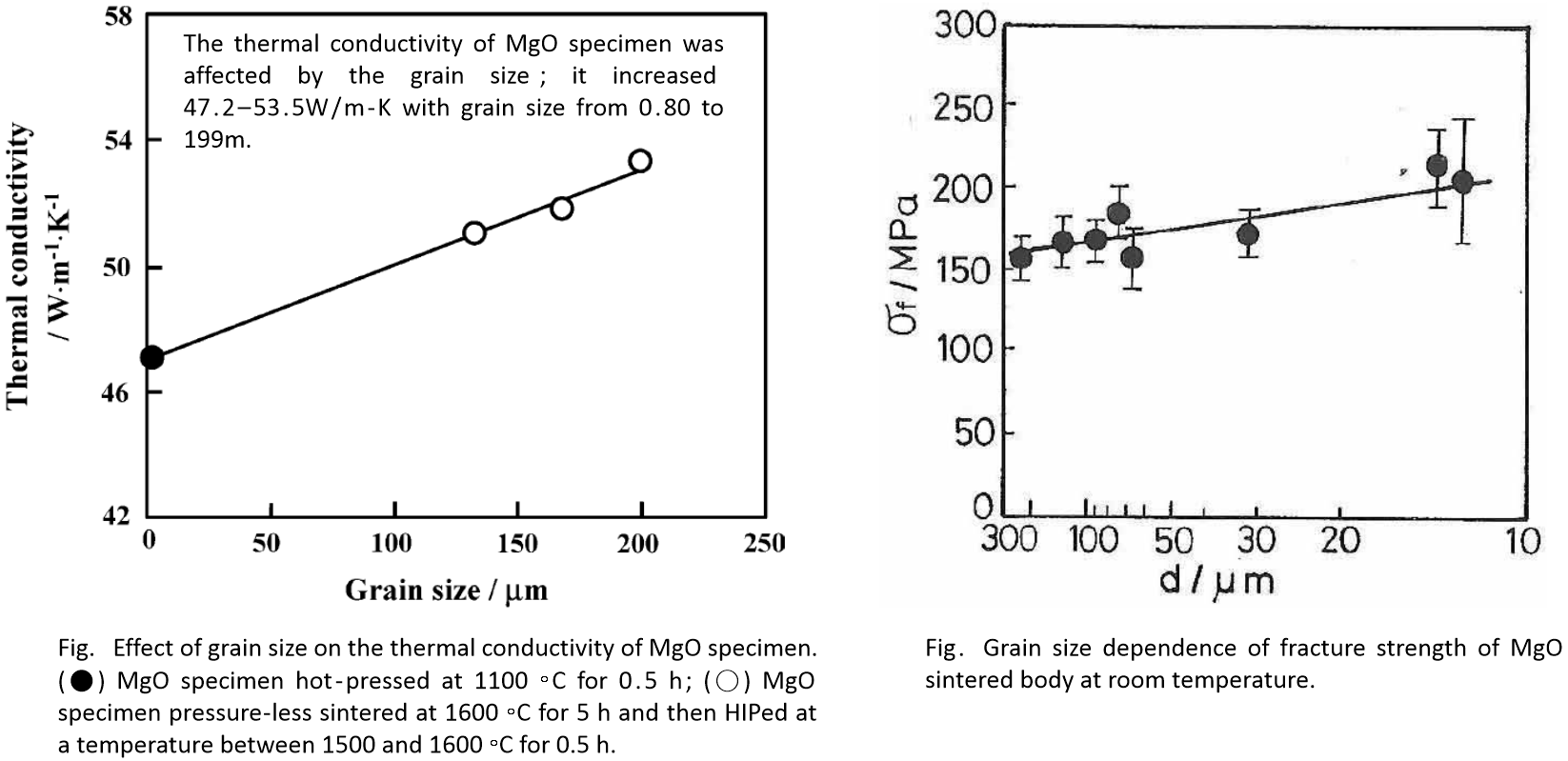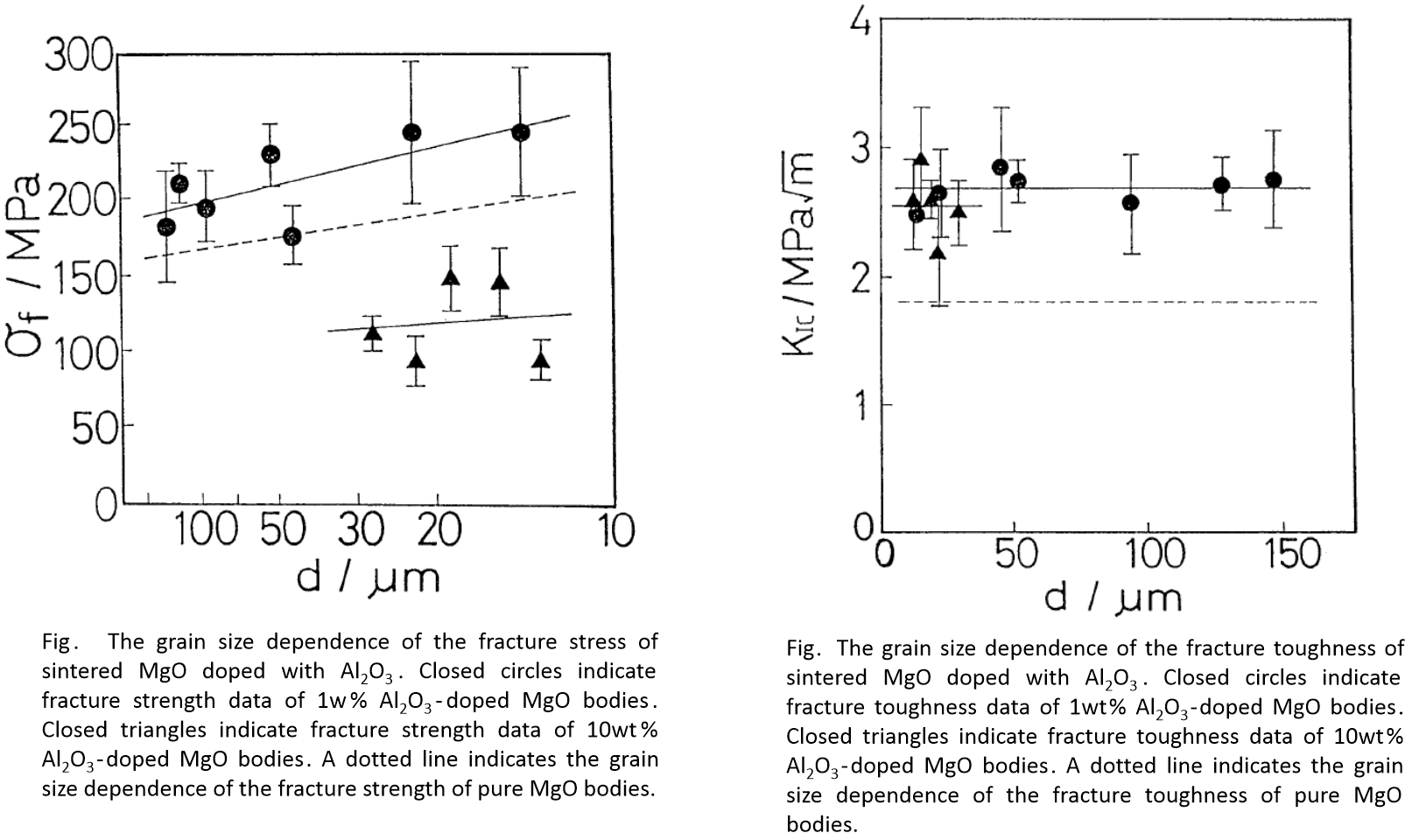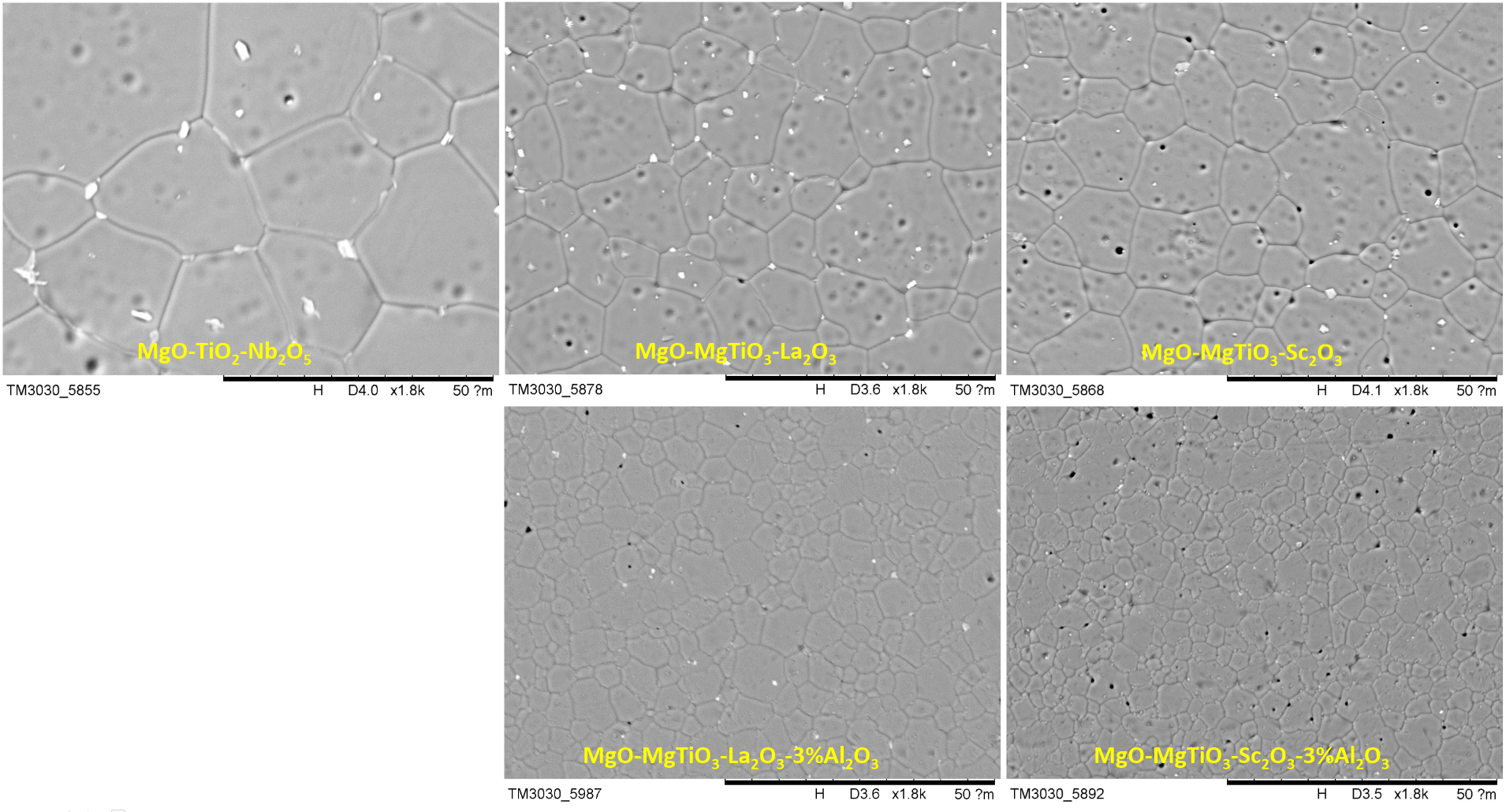Basic Properties of MgO Ceramics

[Classfication of MgO Powders]
| Light burned MgO | Hard burned MgO | Dead burned MgO | |
| Calcination Temp. | 700-1000oC | 1000-1500oC | 1500-2000oC |
| Reactivity | Reactive grade | Low reactive grade | Very little reactive grade |
| Applications |
- Raw materials for ceramics - Additive for plastics/rubber - Raw materials for castables |
- Waste water treatment - Animal feed or fertilizer - Refractory for construction - Cements |
- Refractories, Clinkers |
Light-burned magnesium oxide.
Light-burned magnesia is used in abrasives as a binder in grinding wheels, as a boiler additive to reduce the corrosion of steel pipes as well as for the purpose of preventing steam and sulfur emissions to get into the environment. It is also used in lubricating oils as an additive to neutralize acids, as a plastics filler, an acid acceptor, a thickener catalyst and in pigment enlargement, and in rubber compounding.
Hard-burned magnesium oxide.
Hard-burned magnesium oxide is used in animal feed supplements as a source of magnesium ions for chickens, cattle, and other animals. It is also used in the chemical production of other magnesium salts, such as sulfate and nitrate, in fertilizers as a source of plant nutrition as well as in pharmaceutical uses of magnesium hydroxide, oxide and carbonate in antacids, cosmetics, toothpaste, and in constipation remedies.
Dead-burned magnesium oxide.
Dead-burned magnesium oxide has a very high resistance to thermal shock so it can be used as a refractory material and in ceramics as it is the basic ingredient in product formulations for the steel industry. It is also used in the steel industry annealing process as a coating for grain-oriented silicon steel used in electrical transformers, in oil and gas drilling, and in specialist glass manufacture.
[Basic Properties of Dense MgO Ceramics]


Ref:
(1) Journal of the European Ceramic Society 26 (2006) 639–645
(2) 日本 セラ ミックス協会学術論文誌 98 [10] 1103-08 (1990)
(3) Journal of the Ceramic Society of Japan 100 [6] 797-802 (1992)
(4) Phys Chem Minerals (2014) 41:361–371
[Effect of Sintering Additives on Grain Size]

Sintered at 1350oC for 2h in air
Kor. Pat. Application 10-2024-0038321
